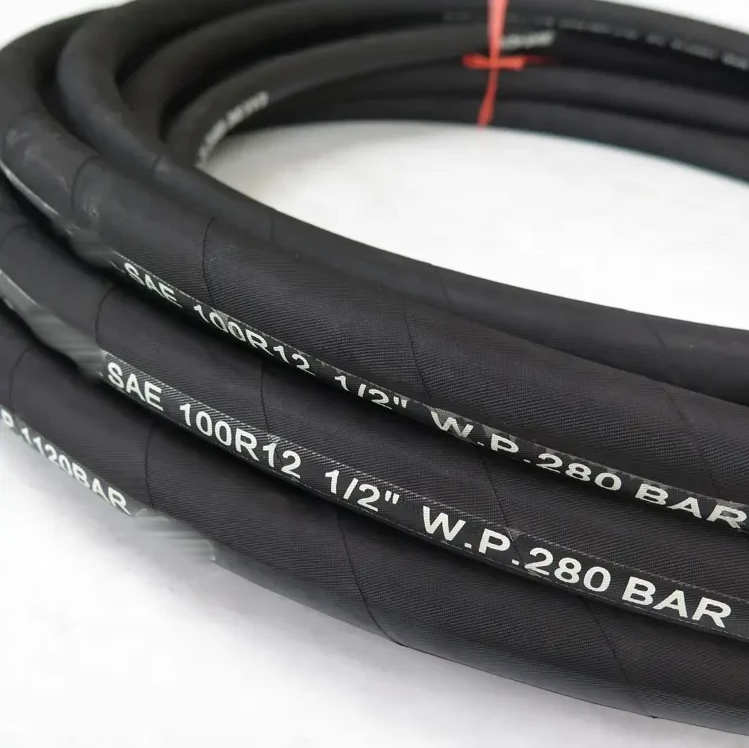335345435
Sep . 07, 2024 11:11 Back to list
Hose Fabrication Services | Custom Hose Solutions
Hose Fabrication An Essential Process in Various Industries
Hose fabrication plays a pivotal role in a multitude of industries, serving as a critical component in the transfer of fluids and gases. From automotive to aerospace, and from agriculture to construction, the demand for high-quality hoses has prompted advancements in their design, materials, and manufacturing processes. This article delves into the intricacies of hose fabrication, highlighting its importance, methods, and applications.
At the heart of hose fabrication is the understanding of the types of materials used
. Hoses are typically made from rubber, thermoplastic, or composite materials, each chosen for their specific properties such as flexibility, durability, and resistance to temperature and chemicals. For example, rubber hoses are often used in applications where flexibility and resilience are paramount, while thermoplastic hoses may be preferred in environments that require lighter weight and greater chemical resistance.The fabrication process itself involves several key steps that ensure the final product meets stringent industry standards. Initially, the raw materials are selected based on the desired specifications. Once the materials are gathered, they undergo cutting, where specific lengths are measured and cut to fit the requirements of the application. It is imperative that these lengths are precise, as any variation can lead to performance issues in the field.
hose fabrication

Following the cutting process, the next step is assembling the hoses. This often involves attaching fittings, which are essential for connecting hoses to various machinery and equipment. The fittings can be made from metal or plastic, and their choice depends on the application requirements such as pressure rating and compatibility with the fluid being conveyed. Techniques such as crimping or welding are commonly employed to secure these fittings, ensuring that the connection is both leak-proof and durable.
Quality control is a significant aspect of hose fabrication. Each hose must undergo various tests to ensure it meets safety and performance standards. These tests can include pressure testing, which checks for leaks and assesses the ability to withstand operational pressures, and bend radius testing, which determines how well the hose can navigate turns without kinking. These rigorous testing protocols are vital in preventing failures that could lead to critical accidents in high-stakes environments.
The applications of fabricated hoses are vast and varied. In the automotive industry, hoses are used in fuel systems, cooling systems, and brake lines, to name a few. In agriculture, irrigation systems rely on specialized hoses to ensure efficient water distribution. Meanwhile, the construction sector depends on heavy-duty hoses for concrete pumping and material transfer. Each of these applications requires specific design considerations, showcasing the versatility of hose fabrication.
In conclusion, hose fabrication is an essential process that underpins numerous industries, ensuring the efficient transfer of fluids and gases. The careful selection of materials, precision in fabrication, and adherence to quality standards are all crucial to producing reliable hoses. As technology continues to advance, the future of hose fabrication promises further innovations that will enhance performance, safety, and efficiency across various applications. Understanding and investing in hose fabrication processes will undoubtedly yield significant benefits for industries reliant on these critical components.
-
SAE 100 R17 Black Smooth Cover Hydraulic Hose
NewsMar.07,2025
-
SAE 100 R17 Black Smooth Cover Hydraulic Hose
NewsMar.07,2025
-
SAE 100 R17 Black Smooth Cover Hydraulic Hose
NewsMar.07,2025
-
SAE 100 R17 Black Smooth Cover Hydraulic Hose
NewsMar.07,2025
-
SAE 100 R17 Black Smooth Cover Hydraulic Hose
NewsMar.07,2025
-
steel wire braided hydraulic hose
NewsMar.07,2025



